Disclosure: This article contains affiliate links. We may earn a commission from purchases at no extra cost to you, which helps our travel content.
Vienna's historic center is a living gallery where Habsburg grandeur meets coffee house culture in a symphony of visual delights. As someone who has spent decades chasing light across continents, I find Vienna's architectural poetry particularly moving in spring, when the imperial facades emerge from winter's shadow and the city parks burst into bloom. During my recent weekend escape from Sydney's familiar rhythms, I discovered that this UNESCO World Heritage site offers far more than the obvious postcard shots. With my trusty Sony a7 III in hand, I wandered through cobblestone passages and grand boulevards, seeking those perfect moments where light, history, and composition align. What follows is my curated guide to Vienna's most photogenic corners—some iconic, others hidden—all waiting to transform your Instagram feed into a visual love letter to this elegant city.
The Classic Imperials: Architectural Grandeur
Vienna's imperial architecture provides a magnificent canvas for photographers, with each palace and monument telling stories of Habsburg glory through their intricate details and imposing scale.
Schönbrunn Palace
The summer residence of the Habsburgs stands as a testament to imperial ambition. While tourists cluster at the main entrance, I found the most compelling shots by arriving at golden hour and positioning myself at the Neptune Fountain looking back toward the palace. The symmetrical gardens create natural leading lines, while the warm light of early morning bathes the yellow façade in a glow that seems to reignite its 18th-century splendor.
On my second morning, I discovered that climbing the hill to the Gloriette offers a breathtaking panoramic view of the palace with Vienna sprawling beyond. The compression effect achieved with my telephoto lens created a layered composition that captured both the palace's grandeur and its relationship to the city.
Belvedere Palace
The Baroque masterpiece of Belvedere offers what might be Vienna's most perfect reflection. The Upper Belvedere's façade mirrored in its pond creates a symmetrical composition that seems almost too perfect to be real. I found myself returning at different times of day, watching how the changing light transformed the scene from crisp morning clarity to the dreamy softness of dusk.
The gardens between Upper and Lower Belvedere offer countless framing opportunities with their manicured hedges and mythological sculptures. In spring, tulips and daffodils add vibrant color accents against the white stone and green lawns—a perfect counterpoint to the formal architecture.
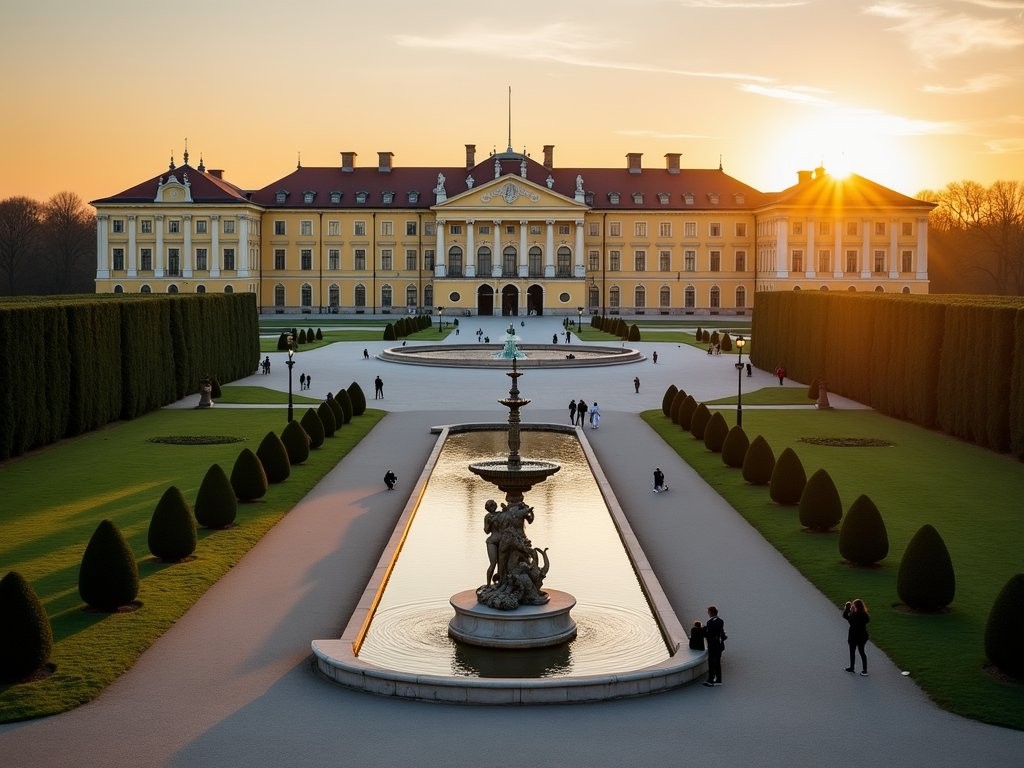
💡 Pro Tips
- Visit Schönbrunn at opening time (8:30 am) to photograph the palace exterior without crowds
- For Belvedere reflections, early morning offers the calmest water surface
- Use a polarizing filter to control reflections and enhance the sky's blue depth
Hidden Courtyards & Passages: Vienna's Secret Corners
Beyond the grand boulevards lies another Vienna—intimate, secretive, and often overlooked by hurried tourists. Some of my most compelling images emerged from these hidden spaces, where history whispers from weathered walls and light plays in unexpected ways.
Blutgasse Quarter
Tucked behind Stephansdom, the medieval Blutgasse quarter feels like stepping through a time portal. Narrow passages with names like Blutgasse (Blood Alley) and Domgasse wind between buildings that have stood since Mozart's time. The compressed space creates dramatic light conditions—shafts of sunlight slice between buildings, creating stark contrasts that transform mundane corners into cinematic scenes.
I found myself returning to the small square where Blutgasse meets Domgasse throughout the day. Morning light streams down the narrow passage, while evening creates moody shadows that evoke Vienna's mysterious past. For street photographers, the occasional passing figure silhouetted against these ancient walls offers a perfect sense of scale and temporal contrast.
Franciscan Church Courtyard
The unassuming entrance to the Franciscan Church (Franziskanerkirche) on Weihburggasse reveals one of Vienna's most serene hidden courtyards. Unlike the ornate Baroque interiors common throughout the city, this space offers minimalist compositions—a simple cross, weathered stone, and the play of light through surrounding buildings.
I visited mid-morning when sunlight filtered through the surrounding buildings, creating geometric patterns across the courtyard stones. The limited palette of weathered grays and browns, punctuated by the occasional splash of color from flower offerings, makes for contemplative, timeless imagery that stands apart from Vienna's more opulent scenes.
Ferstel Passage
This elegant shopping arcade connecting Herrengasse and Freyung offers a masterclass in 19th-century architectural refinement. The curved glass ceiling floods the space with diffused light that's perfect for photography regardless of weather conditions. The marble columns, intricate floor patterns, and ornate details create a sense of refined elegance that epitomizes Vienna's golden age.
I found the most compelling compositions by positioning myself at either entrance, using the arcade's natural framing to create depth. The central rotunda, with its ornate ceiling, makes for stunning vertical compositions—just remember to bring a lens wide enough to capture its grandeur.

💡 Pro Tips
- Visit hidden courtyards during mid-morning (10-11am) when light angles create dramatic shadows
- In narrow passages, use the walls as natural frames for passing figures
- For Ferstel Passage, a wide-angle lens (16-24mm) captures the architectural grandeur best
Coffee House Culture: Capturing Vienna's Living Rooms
Vienna's coffee houses aren't merely places to drink coffee—they're institutions, cultural monuments where time moves differently. For photographers, they offer rich visual narratives combining history, architecture, and living culture.
Café Central
With its vaulted ceilings and marble columns, Café Central is architectural theater as much as coffee house. Once the intellectual hub for figures like Freud, Trotsky, and Stefan Zweig, it retains an atmosphere of thoughtful elegance. Photographically, the challenge lies in balancing the grand architecture with the intimate human moments that make these spaces come alive.
I found the most compelling compositions by focusing on the interplay between the historic interior and its contemporary inhabitants. The contrast between the timeless setting and modern visitors creates a visual tension that speaks to Vienna's relationship with its past. Morning light through the tall windows creates dramatic spotlighting across the marble tables and plush seating.
Café Sperl
Less touristed than Central but equally atmospheric, Café Sperl offers a more authentic glimpse into Viennese coffee culture. The worn velvet booths, billiard tables, and newspaper racks create a lived-in elegance that photographs beautifully, particularly in the soft afternoon light that filters through its large windows.
I spent a contemplative hour capturing details—the perfect spiral of whipped cream atop a Melange coffee, the patina of well-worn marble tabletops, the concentration on an elderly gentleman's face as he reads his newspaper. These intimate vignettes tell a more nuanced story than grand architectural shots.
Café Hawelka
Small, dark, and intensely atmospheric, Hawelka presents technical challenges for photographers but rewards patience with unmatched authenticity. This legendary establishment has changed little since the post-war years when it became a hangout for artists and writers.
The low light conditions demand higher ISOs and steady hands, but the moody atmosphere is worth the technical challenges. I found success by embracing the darkness rather than fighting it—focusing on the small pools of warm light that illuminate faces, the steam rising from coffee cups, and the weathered textures of walls layered with decades of cigarette smoke (from the days before smoking bans).
Rather than attempting to capture the entire space, I focused on creating intimate portraits of this living institution through details—the traditional curved Viennese coffee spoons, the handwritten bills, the characteristic Buchteln (sweet rolls) that emerge fresh from the oven each evening around 8 pm.
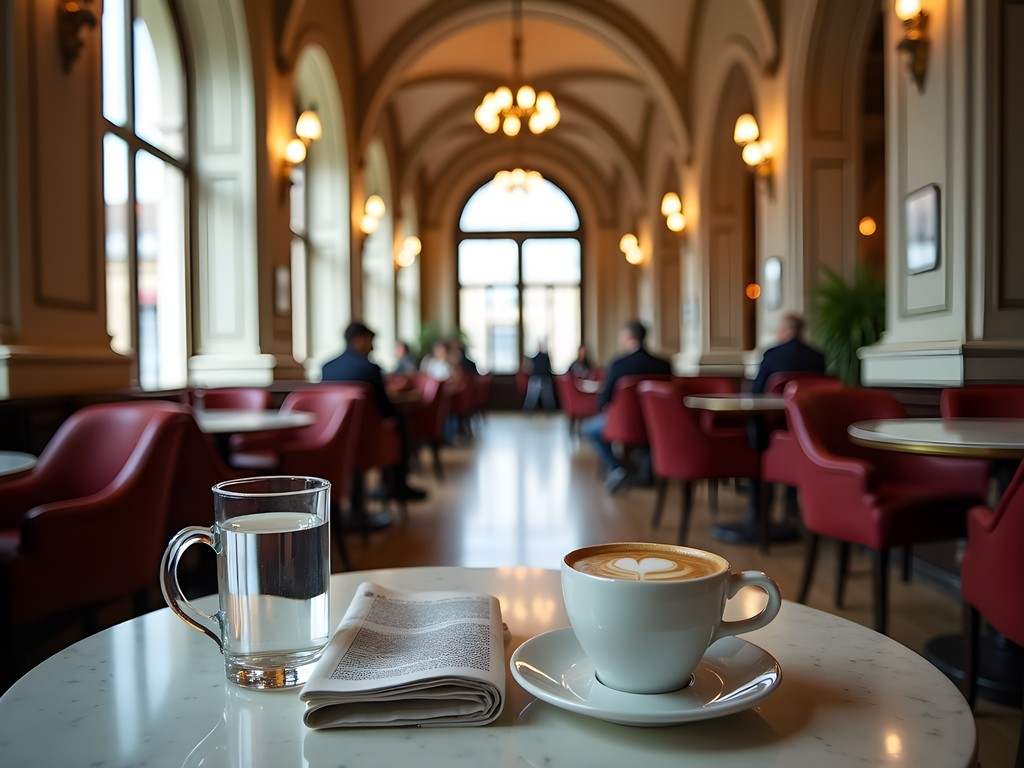
💡 Pro Tips
- Visit coffee houses during off-peak hours (mid-morning or mid-afternoon) for less crowded compositions
- Embrace higher ISO settings (1600-3200) to capture the authentic atmosphere without flash
- Ask permission before photographing staff or patrons up close—a friendly 'Darf ich?' (May I?) and a smile goes a long way
Spring Gardens & Urban Oases
When Vienna shakes off winter's grip, its gardens transform into vibrant canvases of color and light. For photographers, these spaces offer a counterpoint to the city's architectural formality—places where nature and design engage in elegant conversation.
Volksgarten Roses
Come late spring (usually May), the Volksgarten's rose garden erupts in a sensory explosion that challenges every photographer's ability to capture scent through visual means. Over 400 varieties of roses create a chromatic symphony against the backdrop of the Hofburg Palace and Parliament building.
I found the most compelling compositions by arriving early, when morning dew still clung to the petals and the low light created natural spotlighting through the garden. Using my macro lens allowed me to capture intimate portraits of individual blooms while maintaining the grand architectural context in softer focus behind them.
The contrast between the organic forms of the flowers and the rigid neoclassical lines of the surrounding buildings creates a tension that speaks to Vienna's character—formal yet romantic, structured yet sensual.
Burggarten's Palm House
The iron and glass Palm House (Palmenhaus) in the Burggarten offers a compelling study in transparency and reflection. The conservatory structure houses a butterfly garden and café, but its exterior presents fascinating photographic opportunities as it captures and transforms the surrounding environment.
I experimented with compositions that played with the reflective qualities of the glass façade, capturing ghostly impressions of the Hofburg Palace and surrounding garden elements superimposed over the tropical plants within. The juxtaposition of palm fronds against imperial architecture creates a surreal quality that speaks to Vienna's cosmopolitan history.
Stadtpark's Gilded Strauss
The golden statue of Johann Strauss in Stadtpark is admittedly one of Vienna's most photographed icons, but spring offers unique opportunities to frame this familiar sight anew. As the surrounding trees burst into blossom, their organic forms create natural frames for the gleaming monument.
Rather than simply documenting the statue, I explored compositions that used it as an anchor within the larger landscape. The meandering paths, ornamental bridges, and carefully placed flowerbeds offer numerous vantage points. By late afternoon, the lowering sun creates a natural spotlight on the golden figure while casting the surrounding park in softer, more diffused light.
The small pond near the statue offers reflection opportunities on still days, potentially doubling the visual impact of the composition. I found that including park visitors enjoying the space added a narrative element that elevated the images beyond simple documentary shots.
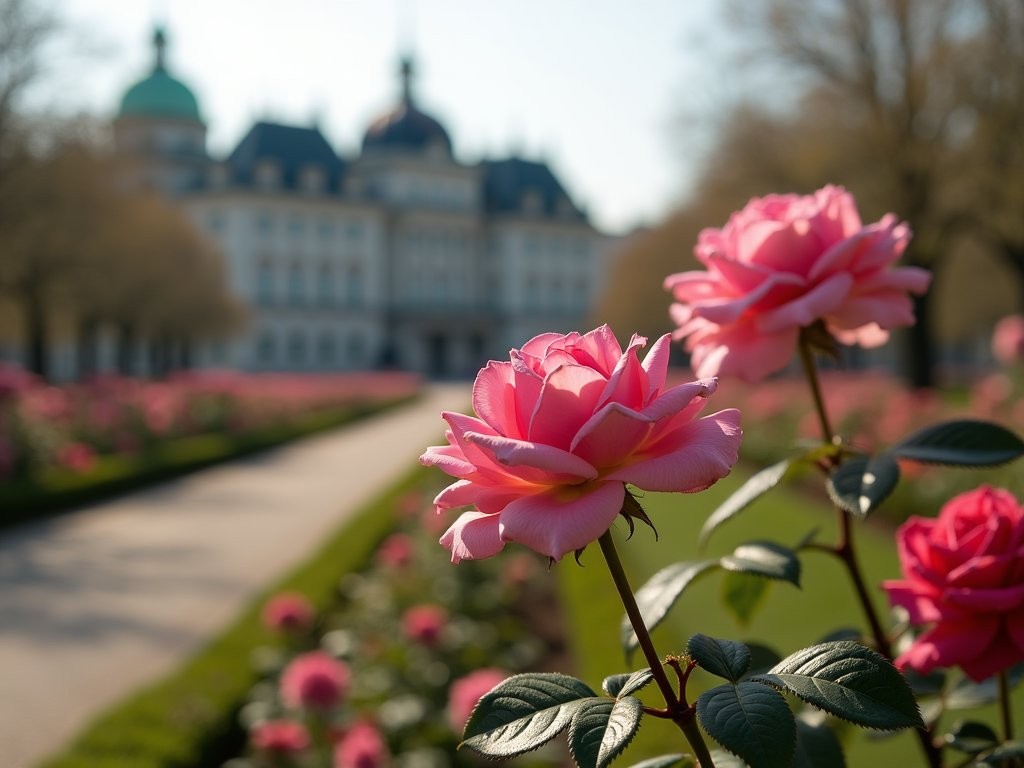
💡 Pro Tips
- For rose photography, use a circular polarizing filter to reduce glare and enhance color saturation
- Visit gardens in early morning or late afternoon to avoid harsh midday shadows
- Include people enjoying the spaces to add scale and narrative to your garden compositions
Urban Geometry: Modern Vienna Contrasts
While Vienna's historic center rightfully celebrates its imperial past, the city offers fascinating visual contrasts where contemporary design intersects with classical elements. These juxtapositions create some of the most thought-provoking photographic opportunities in the city.
MuseumsQuartier Courtyards
The MuseumsQuartier complex represents Vienna's successful integration of ultramodern design within historic frameworks. The former imperial stables now house contemporary museums surrounded by minimalist courtyards where geometric precision creates compelling visual rhythms.
I found the most striking compositions at the interface between the baroque exterior façades and the clean lines of the interior courtyard elements. The distinctive modular outdoor furniture (often in bold colors) provides strong foreground elements against the historic backdrop. The changing light throughout the day transforms these spaces—harsh midday sun creates dramatic shadows and patterns, while evening brings a softer ambiance as the courtyard lighting activates.
Albertina Modern Reflections
The glass entrance pavilion of the Albertina creates fascinating reflective compositions where Habsburg grandeur appears to float within contemporary architecture. By carefully positioning myself, I captured multilayered images where past and present visually coexist in a single frame.
The most compelling shots emerged when I embraced this temporal dialogue rather than trying to isolate elements. By including both historic and modern elements, these images speak to Vienna's evolution as a city that honors its past while embracing contemporary expression.
Danube Canal Urban Art
Just beyond the historic center, the Danube Canal offers a completely different visual vocabulary. Here, sanctioned street art transforms concrete embankments into vibrant open-air galleries that change with each season as new works appear.
Rather than simply documenting individual murals, I looked for compositions that placed this contemporary expression within the context of the historic city. Shots that included glimpses of church spires or classical buildings beyond the canal created a visual dialogue between Vienna's multiple identities.
The canal path is particularly photogenic in early evening when the setting sun illuminates the eastern embankment while restaurants and bars begin to activate with their colorful lighting. This golden-to-blue hour transition creates a cinematic quality that captures Vienna's less formal, more youthful energy.
My DJI Mini 3 Pro drone (used with proper permits and restrictions) allowed me to capture unique perspectives of the canal's sinuous path through the city, revealing patterns and relationships invisible from ground level. These aerial compositions show how the canal functions as both dividing line and connecting thread within Vienna's urban fabric.
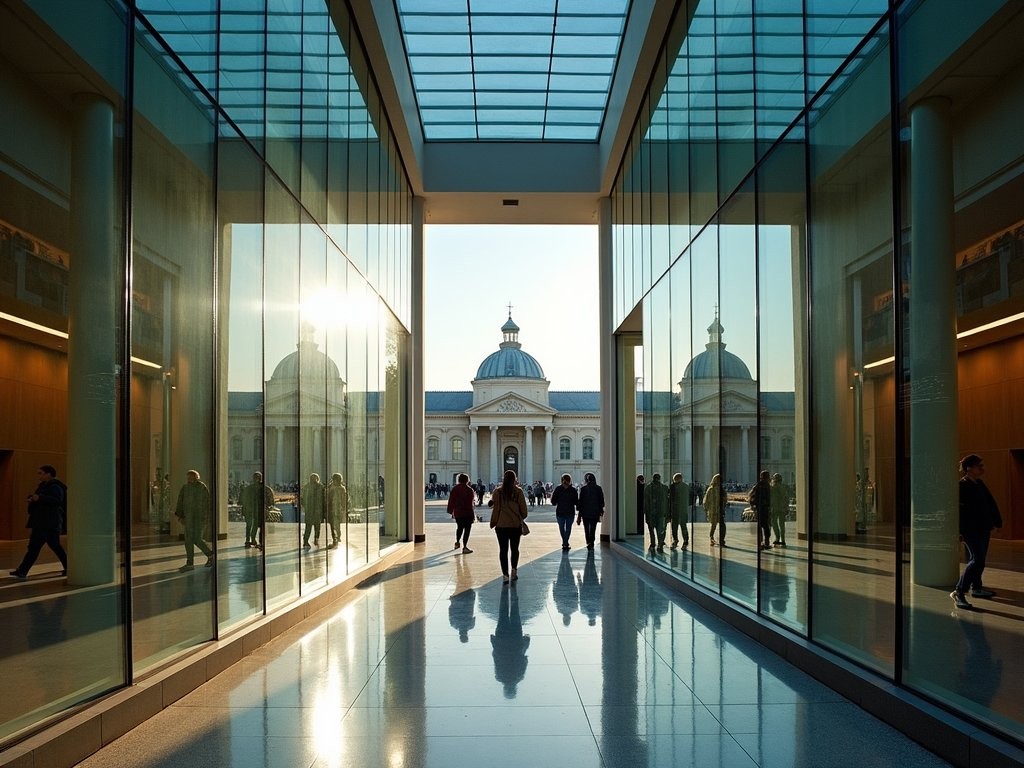
💡 Pro Tips
- For architectural contrasts, look for reflective surfaces that capture multiple elements in a single frame
- Visit MuseumsQuartier in late afternoon when the courtyards fill with locals relaxing on the distinctive furniture
- When photographing street art, include environmental context rather than just documenting the artwork itself
Night Photography: Vienna After Dark
As twilight descends, Vienna undergoes a magical transformation. The theatrical lighting of monuments and public spaces reveals new dimensions of familiar sights, while the golden glow of cafés and restaurants creates intimate vignettes of Viennese life.
Stephansdom Illuminated
St. Stephen's Cathedral (Stephansdom) becomes particularly dramatic after dark, when carefully positioned lighting accentuates its Gothic architecture against the night sky. The intricate tile pattern of the roof catches the light in unexpected ways, creating a mosaic effect visible from various vantage points around the city center.
I found the most compelling compositions by positioning myself at Stephansplatz with a wide-angle lens to capture both the illuminated façade and the movement of the square below. Using a travel tripod allowed for longer exposures that transformed passing trams and pedestrians into streaks of light, adding dynamic energy to the static architecture.
For a different perspective, the rooftop bar of Lamée Hotel offers elevated views of the cathedral's roof and spire. From this vantage point, telephoto compositions isolate architectural details against the night sky, revealing textures and patterns that disappear in daylight.
Hofburg Night Reflections
The Hofburg complex takes on a particularly stately character after dark, when architectural lighting emphasizes its imperial proportions. The smooth paving stones of Heldenplatz and the surrounding areas often retain moisture even after light rain has stopped, creating mirror-like surfaces that double the visual impact through reflections.
I discovered that the most dramatic shots came after brief rain showers, when the wet pavement created perfect reflections of the illuminated buildings. A polarizing filter allowed me to control the intensity of these reflections, either enhancing or reducing them depending on the composition.
Vienna State Opera Nocturnes
The Opera House (Staatsoper) embodies Vienna's musical heritage, and its evening illumination creates a stage-like quality appropriate to its function. The building's Renaissance Revival façade becomes particularly dramatic when photographed during the blue hour—that magical period just after sunset when the sky retains deep blue tones while artificial lighting activates.
I found that positioning myself across the Ringstrasse provided the ideal vantage point, allowing me to capture both the illuminated building and the light trails from passing vehicles. The contrast between the warm golden light of the building and the cool blue of the twilight sky creates a natural color harmony that requires minimal post-processing.
On performance nights, including elements of the well-dressed crowd entering the building adds narrative interest and a sense of living culture to architectural compositions. The ritual of the Viennese opera night—with its distinct dress codes and traditions—offers rich storytelling opportunities beyond mere architectural documentation.
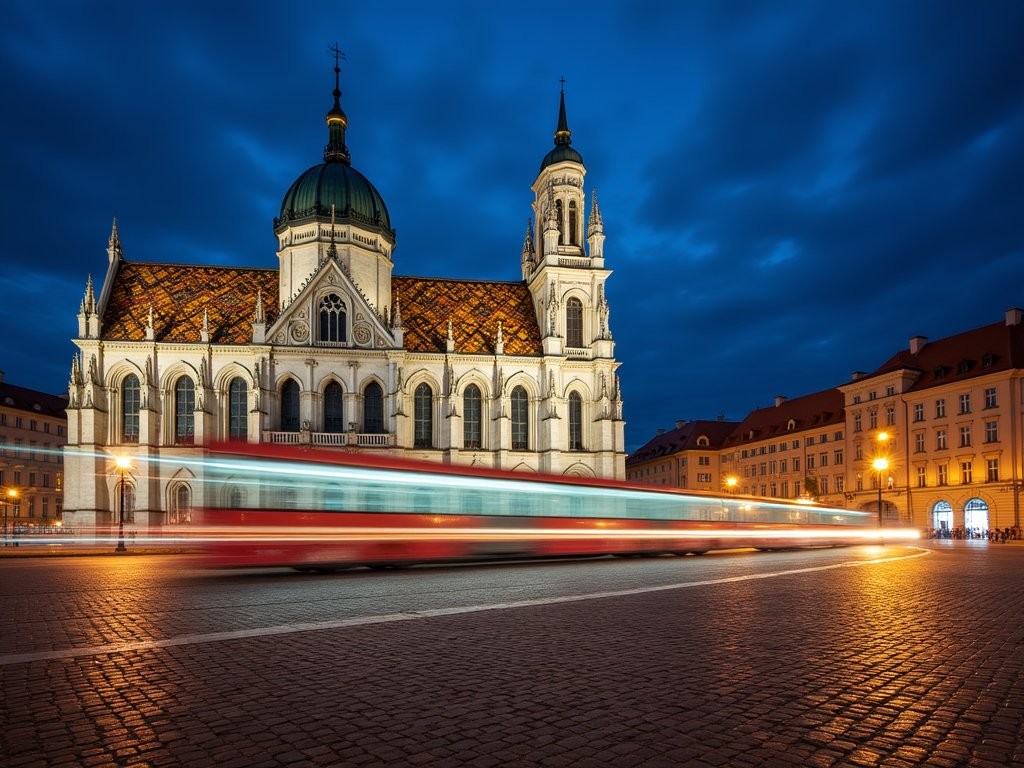
💡 Pro Tips
- Bring a stable tripod for night photography—Vienna's buildings deserve proper long-exposure techniques
- Arrive during 'blue hour' (20-30 minutes after sunset) for the perfect balance of ambient and artificial light
- Look for wet surfaces after rain for dramatic reflection opportunities
Final Thoughts
Vienna reveals itself differently through each lens and every changing light. As I packed away my camera on my final evening, watching the last golden rays illuminate the Hofburg's dome, I realized that photography in this city is less about hunting for compositions and more about surrendering to its inherent visual poetry. The 12 locations I've shared represent merely starting points for your own visual journey through a city that has inspired artists for centuries. Whether you're drawn to imperial grandeur, hidden passages, or contemporary contrasts, Vienna rewards those who slow down and observe with patience and curiosity. The city doesn't simply offer photogenic backdrops—it invites conversation through your viewfinder, a dialogue between past and present, between light and shadow, between the expected and the discovered. So charge your batteries, clear your memory cards, and prepare to see Vienna not just as a destination but as a visual journey that will transform both your Instagram feed and perhaps your photographic eye itself.
✨ Key Takeaways
- Visit key monuments during golden hour (first light) to avoid crowds and capture warm, directional light
- Look beyond the obvious postcard shots to find visual dialogues between historic and contemporary Vienna
- Pay attention to reflective surfaces throughout the city—from puddles to glass facades—that create layered compositions
- Allow time for serendipitous discoveries in Vienna's hidden courtyards and passages
📋 Practical Information
Best Time to Visit
April through early June for ideal light and blooming gardens
Budget Estimate
€150-250 per day including mid-range accommodation, meals, and admissions
Recommended Duration
3-4 days minimum to cover these photography locations without rushing
Difficulty Level
Easy - Most Locations Are Within Walking Distance In The Compact Historic Center
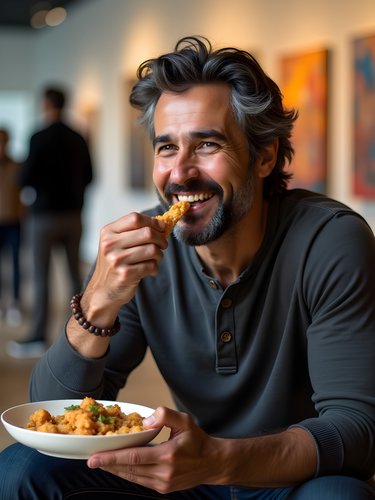
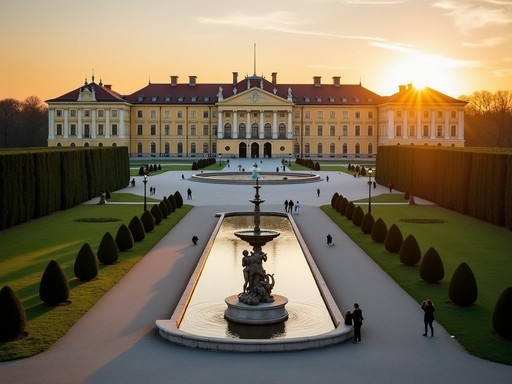

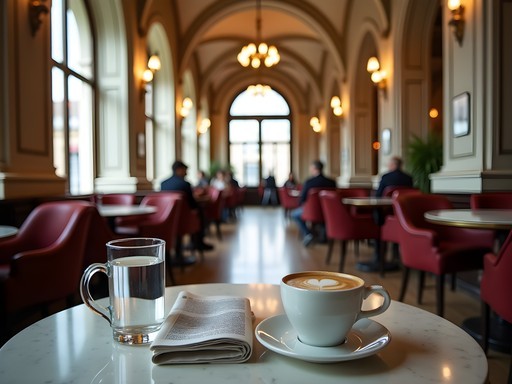
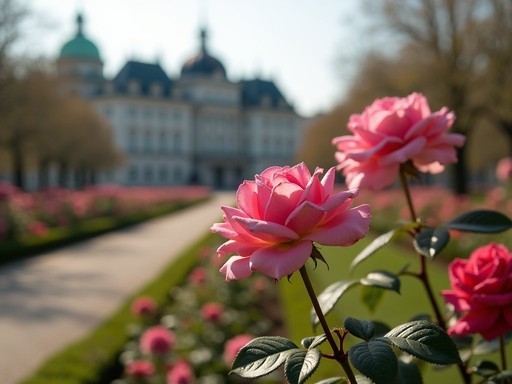
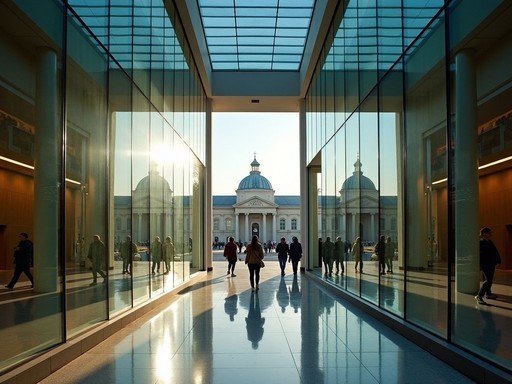











Comments
adventureclimber
Beautiful shots! Is Vienna still photogenic in winter or should I wait until spring to visit? Planning my Europe trip now.
moonninja6454
Winter in Vienna is magical! Christmas markets + snow on baroque buildings = photographer's dream!
mountainguide
Just got back from Vienna and used this guide extensively - THANK YOU! Those hidden courtyards were absolute photography gold mines. We found this amazing one near Judenplatz with the most beautiful ivy-covered walls and ornate details that nobody else seemed to know about. The coffee house culture shots were harder than I expected though - balancing the dark interiors with bright windows was tricky. Any advice on camera settings for those conditions?
Amit Sanchez
So glad it helped, mountainguide! Coffee houses are definitely challenging. I usually bracket my exposures or use HDR for those contrasty scenes. Alternatively, go manual and expose for the midtones, then bring back shadows/highlights in post. The atmosphere is worth the extra effort!
Sophia Gomez
Amit, your post brings back so many memories! I was in Vienna for a business conference last year and extended my stay just to photograph the city. One tip I'd add for fellow photographers - don't miss the Naschmarkt at dawn when vendors are setting up. The colors and textures are incredible, and the light has this magical quality before the crowds arrive. I captured some of my favorite shots using my travel tripod which was perfect for those low-light morning scenes. The contrast between the market's vibrant energy and the imperial architecture surrounding it tells such a compelling visual story about Vienna's many layers.
blueperson
Going to Vienna for the first time next week! Which of these spots would you recommend for someone with just a smartphone camera?
wildlife
Not Amit, but I got amazing smartphone shots at Belvedere Gardens and in the coffee houses! The lighting in Café Central is surprisingly phone-friendly.
Frank Garcia
Solid guide, Amit. I backpacked through Vienna last summer and found the contrast between imperial architecture and modern street art particularly fascinating. For those wanting to capture both sides of Vienna, I'd add Museumsquartier to this list - especially the courtyards behind the main buildings where local artists often gather. The lighting there creates interesting shadows around sunset. Did you try any rooftop spots? I found a few hostels with accessible rooftops that gave unique perspectives of the city skyline with all those church spires.
adventureclimber
Hey Frank, which hostels had those rooftop views? Heading to Vienna next month and would love to check them out!
Frank Garcia
Wombats City Hostel near Naschmarkt has a decent rooftop terrace, but my favorite was actually a small boutique hostel called Der Wilhelmshof - not super high but great angles of the surrounding district!
moonninja6454
Love the coffee house shots! So atmospheric!
wanderlustlegend
These photos are absolutely stunning! Vienna just moved up on my bucket list!
wildlife
Amit, you've absolutely nailed the essence of Vienna! I was there last fall and completely missed those hidden courtyards you mentioned. The light hitting Stephansdom in the late afternoon was magical though - spent hours trying to capture it from different angles. Did you find the early morning or evening better for photographing the imperial buildings? The crowds were intense during midday when I visited.
Amit Sanchez
Thanks wildlife! I'm definitely a golden hour enthusiast - both morning and evening work beautifully in Vienna, but I prefer mornings around the Hofburg and Belvedere when there are fewer people. The courtyards are such hidden treasures - hope you can discover them next time!
wildlife
Morning it is for my next trip then! Saving this post for reference. Your lighting tips are always spot on.
dreampro
Which lens did you use for those amazing palace interior shots?
Nicole Russell
Amit!!! This guide is EVERYTHING! 😍 Just spent a week in Vienna with your blog post as my photography bible! The morning light in the Hofburg courtyards was exactly as you described - pure gold! I'd add one secret spot: there's a tiny alley called Schönlaterngasse with the most adorable red lantern that makes for the PERFECT Instagram shot. And omg, Café Central wasn't just photogenic but the apple strudel was life-changing! Anyone heading to Vienna - don't miss the Naschmarkt at closing time when vendors are packing up - such authentic moments to capture! Will tag you in my posts soon!
summertime
Thanks for the Schönlaterngasse tip! Adding it to my list for next week!
Venture X
Premium card with 2X miles, $300 travel credit, Priority Pass